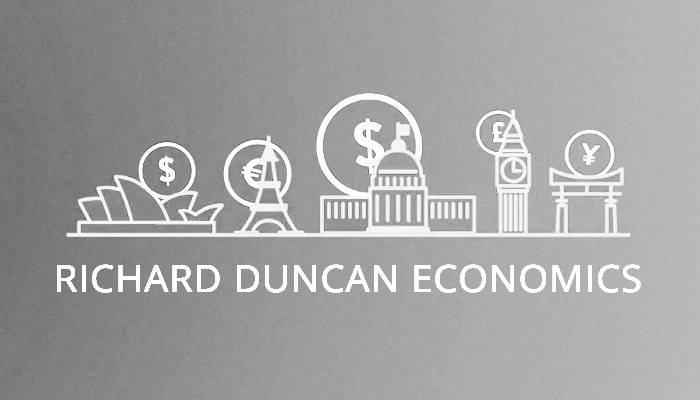Macro Watch Q2 2014 Is Ready To Watch

Posted March 29, 2014
Macro Watch: Second Quarter 2014 has been uploaded and is now ready to watch.
This quarter, there are seven videos, beginning with one warning investors that the stock market may be particularly treacherous over the rest of this year. Here’s what you can expect:
Contents:
1. Treacherous Markets Ahead
A warning to investors: Shifting Liquidity could make the markets particularly tricky for the rest of this year.
2. The Fed & Its Challenges
A discussion of the Fed’s short-term, medium-term and long-term challenges.
3. Austrian Economics: Right & Wrong
Drawing a different and controversial lesson from the Austrian theory of the credit-driven business cycle.
4. What Drives Currencies?
A discussion of the factors that cause currencies to move up and down against one another.
5. China’s Economic Crisis
China’s economic growth model of export-led, investment-driven growth is in crisis.
6. Credit Growth Update
Recent data confirms that credit growth remains too weak to drive economic growth.
7. Economic Update
The US economy weakened in Q1 and the world economy suffered as a result.
If you are a subscriber, click here to begin watching:
http://richardduncaneconomics.com/macro-watch/
If you are not a subscriber, I hope you will become one now:


Richard- discovered your first book in 2007 and have enjoyed all your books and blog since. One thing I’m not clear on….
The Fed has built their balance sheet to about $4 Trillion by buying mostly Treasuries and MBS from banks. With the cash received from selling the securities to the Fed, the Bank can then either lend, buy securities or park it at the Fed as Excess Reserves. The Excess Reserves held at the Fed are about $2.5 Trillion. It seems to me that the only amount that has pushed liquidity up in the economy is the difference between the Fed Balance sheet and the Excess Reserves. So really only $1.5 Trillion has reached the economy.
Since we don’t know what the banks will do with the money received by selling securities to the Fed, it seems unpredictable to estimate the amount of liquidity being added to the economy purely by looking at the amount the Fed is QE-ing.
What are your thoughts?
James, Thanks for the question.
One view is that QE is not having any positive impact on anything because all the money ends up as the banks’ Reserve Balances With The Fed.
First, the Fed’s QE program, by creating and injecting $3.3 trillion into the financial markets since the end of 2007 has allowed the government to finance $6 trillion of budget deficits at very low interest rates. And the government spending has stimulated the economy and prevented a depression. That would not have been possible without QE.
Second, when the Fed creates money and buys assets, the people it buys the assets from then have money that they use to buy other assets, like stocks (or whatever. It really does not matter what they buy, money is fungible.)
Now, I know the argument is that all the money just ends up in the banks’ Reserve Balances With The Fed and so has no impact on anything. But here are my thoughts on that:
1. I just looked at the Fed’s balance sheet. If my calculations are correct, the Fed’s assets have increased by $3,333 billion since the end of 2007, while the banks’ Reserve Balances With The Fed have increased by $2,606 billion. So, there is a difference of $727 billion that went somewhere else. That is a significant amount of money.
2. Next, I wonder (but don’t know for sure) if the banks can’t use this cash at the Fed as collateral and borrow against it, using the borrowed money to acquire assets. That must be a possibility.
3. Even if points 1. and 2. above are incorrect, there is clearly a psychological impact. When QE1 started, the S&P went up. When QE1 stopped, the stocks went down. When QE2 started the S&P went up. When QE2 stopped, the stocks went down. When LTRO started in November 2011, the stocks went up. After a while, they started going back down. Then Q3 started and they have been going up ever since.
That seems to me to be the way QE pushes up asset prices.